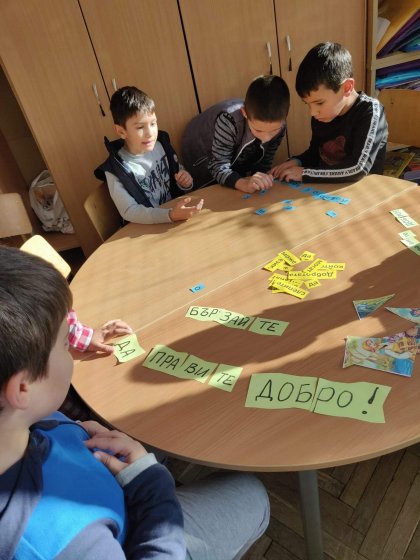2017-2020 Expenditures for Children Increase from 4.1% to 4.7% of GDP Due to Increased Funding for Education

Sofia, November 14 (BTA) - Between 2017 and 2020, expenditures for children and families increased their share of the GDP from 4.1 per cent to 4.7 per cent, show data from an analysis by the National Network of Children for the financial investments of the Bulgarian state in children in the areas of health, education and social support.
The analysis was commissioned by the National Network for Children under the Institute of Market Economics (IME). It refers to the period 2017-2020. The data were presented by Lachezar Bogdanov from IME at a discussion on the topic, which was broadcast online on Facebook on November 9.
The registered growth was entirely due to an increase in education funds, with funds allocated to health care even reducing their share in GDP by 0.1 percentage points. The increase in education funds was part of an overall increase in public spending, whose share in GDP has been growing in some years at an even faster rate than the growth of spending on children and families, the analysis said.
If funds were allocated equally for each child, in 2017 this would be 3,344 leva per child, which is equal to 3.95 per cent of GDP or 7.60 per cent of all public expenditures. In 2021, this would be 4,718 leva per child, which is equal to 4.7 per cent of the projected GDP and 11.7 per cent of the expected total public expenditures, the analysis states.
There is no clear tendency to change the share of expenditures for children and families taken as a whole within the state budget. Although they increased in absolute terms, spending on children and families decreased its share of the total state budget in 2018 and 2019, before increasing it again in 2020, but without reaching the share of 2017. This does not apply to education expenditures, which have grown significantly and steadily throughout the period, the analysis said.
In 2017, 56 per cent of the expenditures for children were intended for education, 31 per cent were for social assistance, and 13 per cent were for health care. In 2021, due to the outpacing growth of education expenditures, the ratio has changed significantly in favour of education - 61 per cent of expenditures were intended for education, 26 per cent are for social expenditures, 13 per cent are for health care.The funds considered in the analysis were intended for various services and payments that developed modern countries consider to be due to each child.
The analysis is the first of its kind in Bulgaria and can be used to assess and track investments in children's policies.
The discussion was attended by representatives of various political parties that have joined the National Network for Children's initiative "Parliamentary Group for Children". The idea is for politicians, if they become part of the next National Assembly, to work in parliament in the interest of children. ZH/DT



 EUR 1.9558
EUR 1.9558
 USD 1.7284
USD 1.7284
 CHF 1.8677
CHF 1.8677